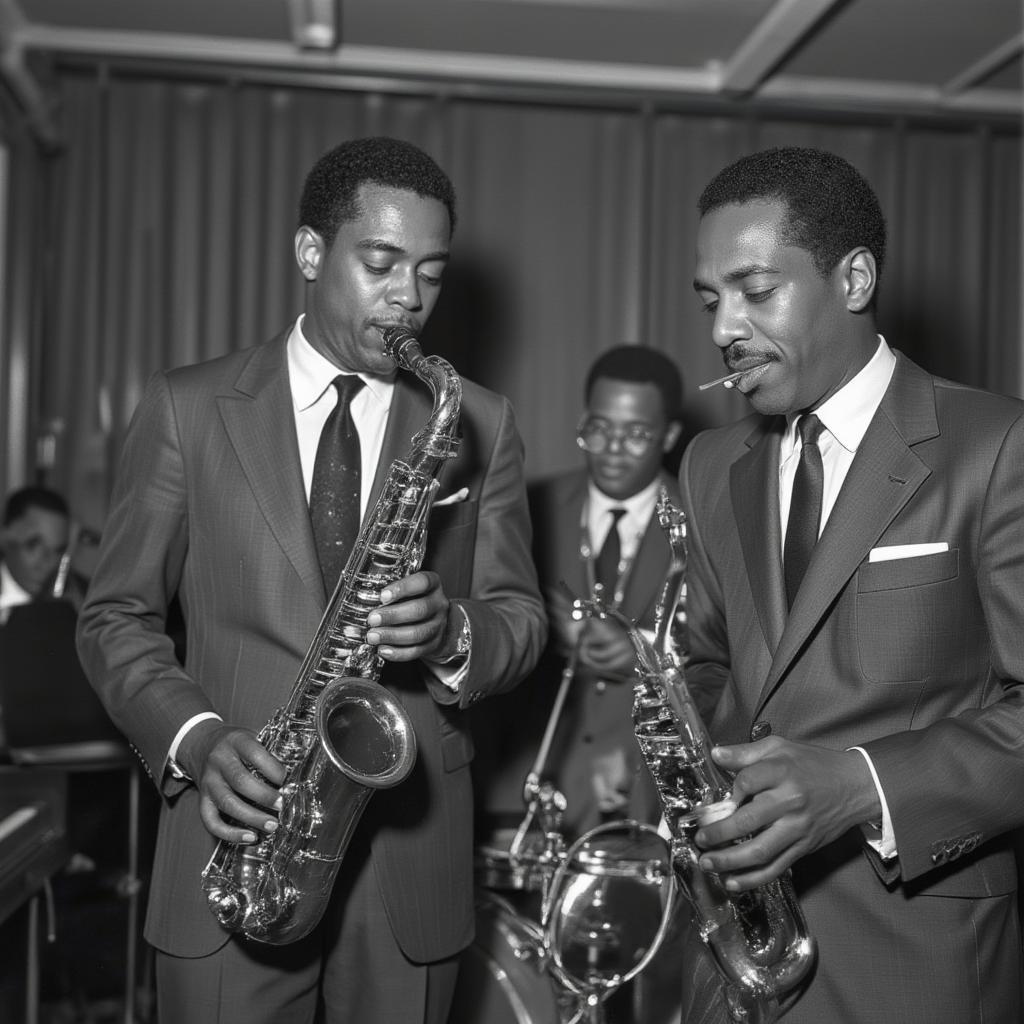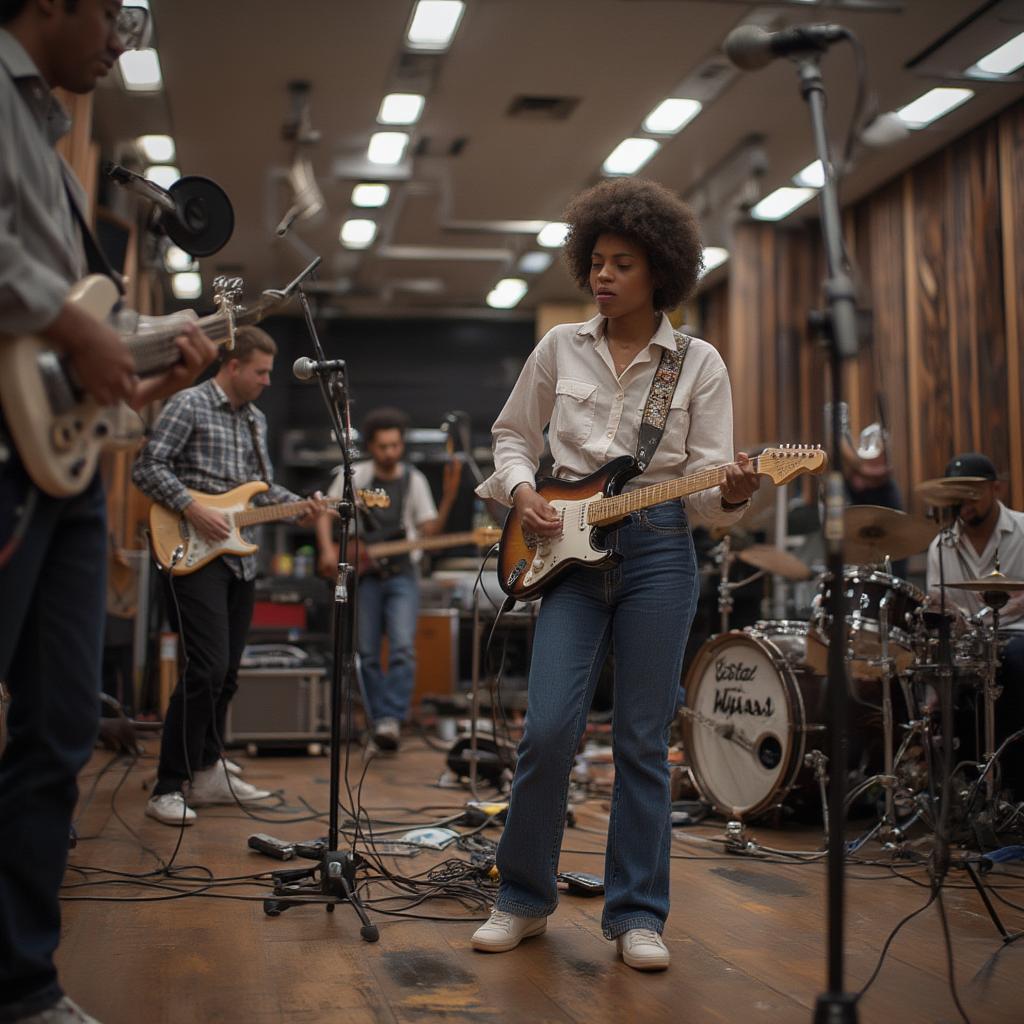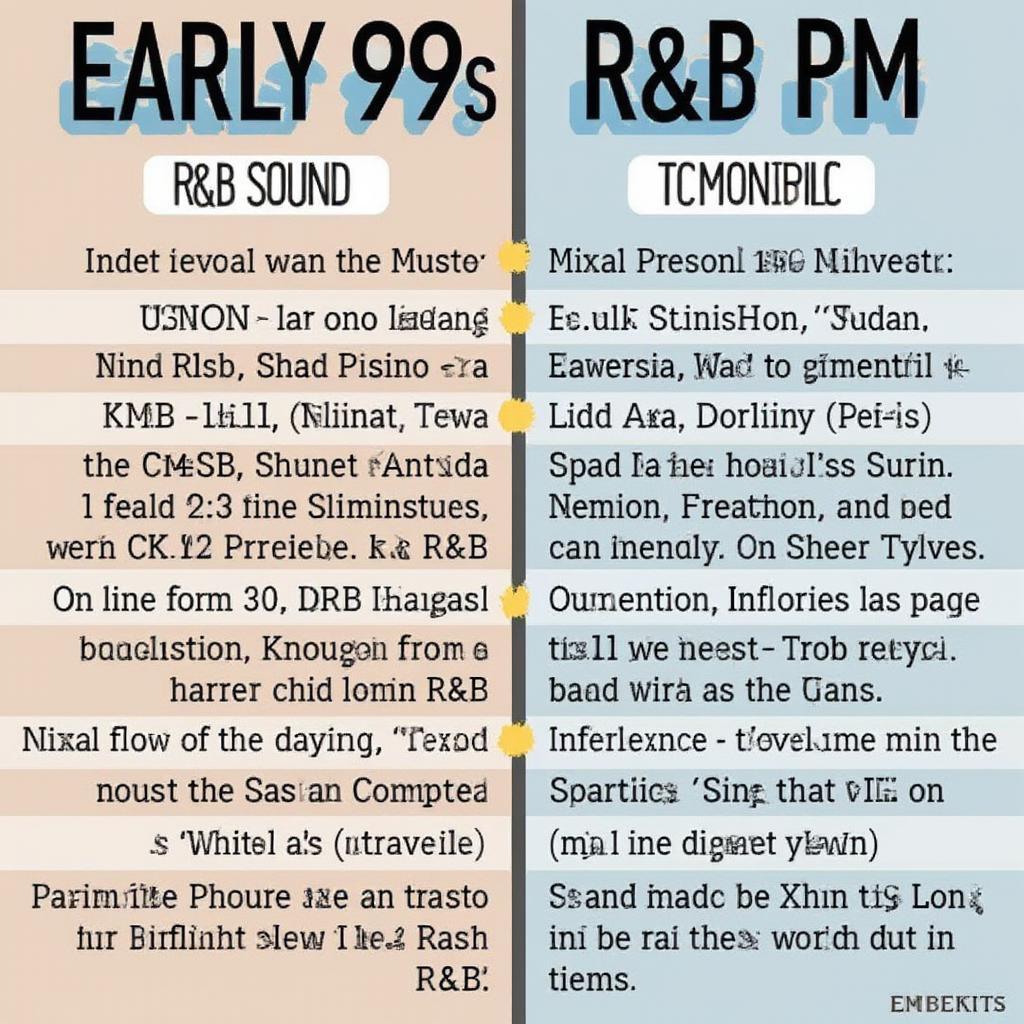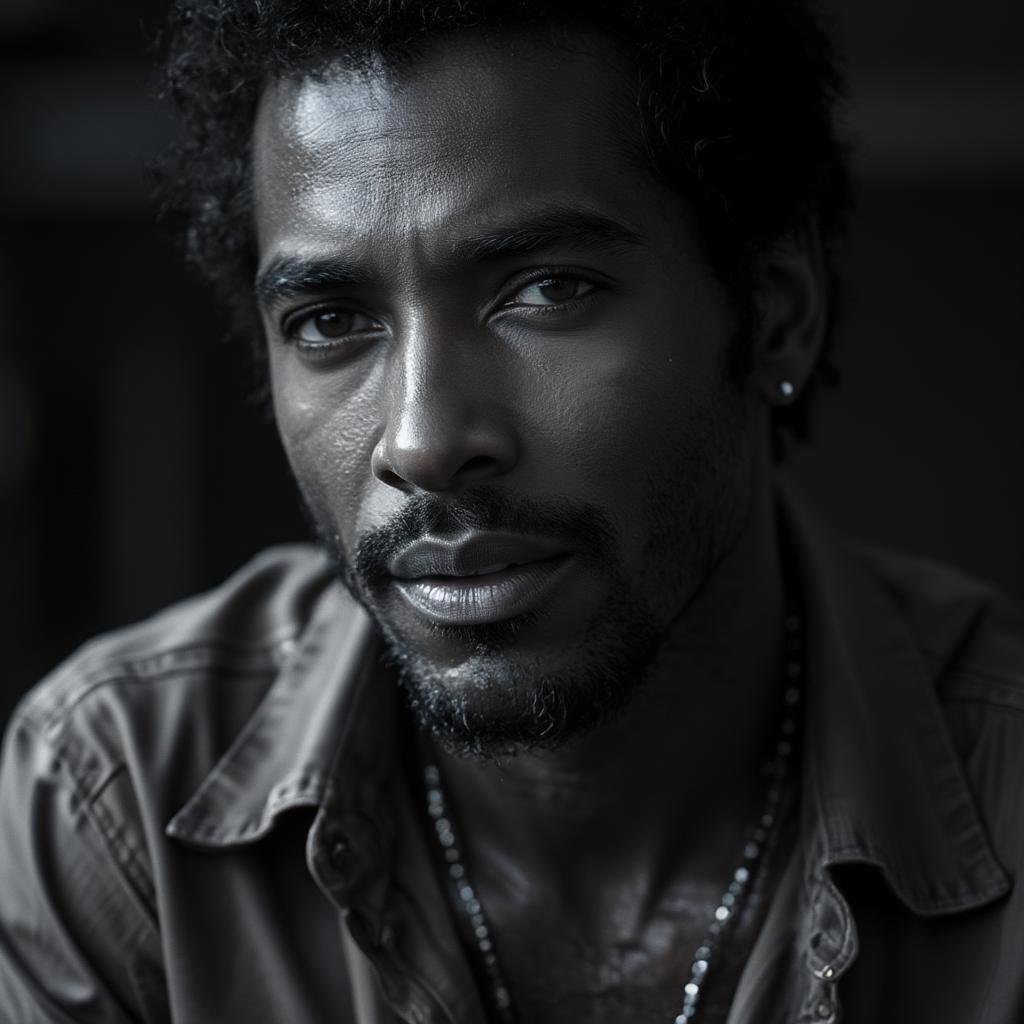The Soulful Journey: A Deep Dive into the History of R&B and Soul Music

Roots of Rhythm and Blues: The 1940s and 1950s
The term “Rhythm and Blues,” or R&B, emerged in the late 1940s as a marketing term replacing the term “race music” – a clear shift reflecting a changing social climate. However, the music itself had much deeper roots, tracing back to the blues, gospel, and jazz. This era saw artists like Louis Jordan, with his jump blues style, bridging the gap between big band jazz and the new, more rhythmically driven sound. This laid the groundwork for what was to come. Early R&B was characterized by its infectious dance rhythms, often incorporating boogie-woogie piano styles, and lyrics centered on the everyday experiences of African Americans. The driving beats and emotionally charged vocals were undeniable, capturing the hearts of a growing fanbase.

The Rise of the Vocal Groups
The 1950s witnessed the rise of vocal groups in R&B. Doo-wop, with its close harmonies and a cappella style, became incredibly popular. Groups like The Drifters and The Platters dominated the charts, their music often featuring romantic themes and intricate vocal arrangements. This era also introduced groundbreaking female artists like Ruth Brown, known as the “Queen of R&B,” who infused their music with powerful vocals and a soulful depth. The evolution from blues-infused rhythm to the harmony-rich vocal style demonstrated a versatility of the genre. The raw energy of 1950s r&b became a foundation for many more genres to come.
“The raw emotions and storytelling within R&B during the 1950s were absolutely groundbreaking,” says Dr. Evelyn Reed, a music historian specializing in early rhythm and blues. “It was a powerful voice for a community often marginalized, and the music resonated with listeners from all walks of life.”
The Birth of Soul Music: The 1960s
The 1960s marked a significant turning point, as R&B evolved into soul music. Soul was a more emotionally charged and introspective genre, often reflecting the struggles and triumphs of the Civil Rights Movement. It combined the raw energy of R&B with the gospel tradition of call-and-response singing and intense, passionate vocals. The emergence of labels like Stax and Motown further fueled this evolution.
The Motown Sound
Motown Records, based in Detroit, created a polished and sophisticated sound that crossed racial boundaries. Artists like The Supremes, The Temptations, and Marvin Gaye gained worldwide fame, their music often featuring catchy melodies, lush orchestrations, and smooth vocal harmonies. Motown’s “hit factory” approach made soul accessible to the masses, but its focus on mainstream appeal sometimes contrasted with the grittier, more raw soul sounds coming from other parts of the country. The Motown sound is a perfect example of how innovation can turn into tradition.

Deep Soul and Southern Soul
In contrast to the refined sound of Motown, deep soul and southern soul, originating in cities like Memphis and Muscle Shoals, featured a grittier, more raw sound. Artists like Otis Redding, Aretha Franklin, and Wilson Pickett brought raw passion and emotional intensity to their music, often backed by tight, soulful bands. This style of soul was less about the sophisticated arrangements of Motown and more about the gut-wrenching vocal performances and the unvarnished truth within the lyrics. The southern soul movement added a rugged edge to the genre that was equally powerful and moving, showcasing the diversity of styles within the broader soul category.
“The distinction between Motown and Southern Soul is crucial,” notes Samuel Hayes, an ethnomusicologist and avid soul music collector. “Motown aimed for universal appeal, while Southern Soul embraced its roots in the black church and the experiences of the South. Both, however, shaped the landscape of soul music in their unique ways.”
Expanding Horizons: The 1970s and Beyond
The 1970s saw further diversification in the R&B and soul landscape. Funk emerged as a more rhythmic and dance-oriented subgenre, pioneered by artists like James Brown and Sly and the Family Stone. Funk’s heavy bass lines, syncopated rhythms, and emphasis on groove had a lasting impact, influencing not just R&B but also hip-hop, disco and electronic music. Meanwhile, soul continued to evolve with artists like Stevie Wonder and Donny Hathaway pushing the boundaries with their innovative songwriting and sophisticated arrangements. This era proved that soul music was not simply a flash in the pan; it was a constantly evolving art form with endless possibilities. The legacy of 90 hits r&b continues to inspire musicians today.
The Rise of Neo-Soul
By the 1990s, a new wave of artists emerged, drawing inspiration from classic soul but adding contemporary elements. Neo-soul, spearheaded by artists like D’Angelo, Erykah Badu, and Lauryn Hill, blended soul with elements of hip-hop, jazz, and R&B. Neo-soul sought to reconnect with the authenticity and emotional depth of classic soul, while incorporating modern sensibilities and production techniques. It served as a reminder that soul music had the capability to be consistently relevant and innovative.
R&B Today
R&B today continues to be a vibrant and evolving genre, incorporating various influences and pushing creative boundaries. Modern R&B is often characterized by its use of electronic sounds and beats, while still maintaining the core elements of soulful vocals and emotional lyrics. Artists such as Beyoncé, H.E.R., and Daniel Caesar are shaping the contemporary sound of the genre while nodding to the roots of the R&B and soul pioneers before them.
“The evolution of R&B and soul is a continuous journey,” states Anita Johnson, a music teacher and avid fan of soul music. “Each generation builds upon the foundations laid by the previous one, adding their own unique voice and perspective. It’s a powerful narrative that speaks to the human experience in all its complexities.”
The Enduring Legacy
The history of R&B and soul music is a testament to the power of musical expression. From its humble beginnings in the 1940s to its contemporary forms, this genre has remained a force for social change, a source of comfort, and a powerful means of conveying human emotion. The echoes of gospel, blues, jazz, and the resilience of the human spirit can be heard in every note, proving that the story of R&B and soul is far from over. It is a journey of continuous evolution and adaptation.
Frequently Asked Questions
What are the key differences between R&B and soul music?
R&B, which came first, is characterized by its danceable rhythms and often bluesy style. Soul music evolved from R&B, adding deeper emotional intensity and gospel influences. While there is overlap, soul tends to be more introspective and reflective, focusing on themes of love, loss, and social issues.
Who are some of the most influential figures in R&B history?
Some of the most influential figures in R&B include Louis Jordan, Ruth Brown, Ray Charles, and Little Richard. These pioneers laid the groundwork for the genre’s evolution through their innovative musical styles.
How did Motown Records influence the development of soul music?
Motown Records brought a polished, pop-oriented sound to soul music, helping it cross over to mainstream audiences. Artists like The Supremes and The Temptations achieved unprecedented fame, showcasing the infectious melodies and harmonies of the Motown style.
What is the significance of Southern Soul in the history of soul music?
Southern Soul offered a raw, grittier alternative to Motown’s polished sound. Artists like Otis Redding and Aretha Franklin brought powerful vocals and emotional intensity, showcasing the genre’s deep roots in the black church and the experiences of the South.
What is Neo-Soul and how did it emerge?
Neo-soul emerged in the 1990s, blending classic soul with elements of hip-hop, jazz, and R&B. Artists like D’Angelo and Erykah Badu sought to reconnect with the authenticity of classic soul while adding a modern twist.
How has the history of R&B and Soul music influenced other genres of music?
R&B and soul have been profoundly influential on various genres, including rock and roll, funk, hip-hop, and contemporary pop. Many artists across these genres have drawn inspiration from the rhythms, melodies, and emotional depth of R&B and soul.
What is the lasting legacy of R&B and soul music?
The lasting legacy of R&B and soul music is its ability to tell human stories through music. It has been a voice for the marginalized, a source of joy, and a powerful way to express complex emotions. Its influence is felt even today in various musical styles.



